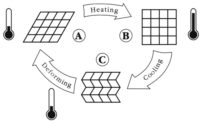In basic geometry class, students are all taught the same rule: The most direct route between two points is a straight line. However, manufacturing engineers at Applica Inc. (Miami Lakes, FL) have discovered a different truth by applying cellular assembly cells.
When point A is a collection of unassembled parts and point B is a company?s productivity and quality goals, the most direct path is a U-shaped curve.
The benefits of this theory have been tested repeatedly by Applica employees in China and Mexico who assemble a variety of household appliances, such as blenders, coffeemakers, irons and toaster ovens. In fact, the U-shape vs. straight-line theory has become the rule.
Since redesigning the Queretaro, Mexico, plant based on lean principles, total productivity has increased by 70 percent. Today, the factory produces 100 percent more products than it did in the mid-1990s. Quality, measured in defects per million opportunities, was more than 20,000 in 1994; today, it is less than 100. In 1994, the scrap rate was 4 percent; today, it is 0.4 percent.
This did not happen in a controlled environment. It would have been much easier if our product lines and customer demand had remained somewhat steady during the transition. But, Applica?s former parent company shut down plants in North Carolina and Malaysia, and transferred half of that business to Mexico.
The inventory, machines and new product expectations landed in our 200,000-square-foot plant in 1998. Without cellular manufacturing, we would have been in serious trouble. But, our engineering team completely integrated the new operations within months.
Old Assembly Process
Steam irons are the main product assembled at the Queretaro plant. In the past, the shop floor was dominated by two huge assembly lines, configured around 40-meter conveyor belts, which produced one iron every 4 seconds.
The base of each iron, known as the sole plate, was produced in a separate die-casting department, where it was also trimmed and polished. A steam chamber was attached to each sole plate with a slow-drying adhesive and was transferred to a long, aerial conveyor belt to begin an 8-hour journey to the assembly line.
Approximately 200 employees were clustered around each assembly line and the workers were surrounded by work in process and loose inventory. Like most companies, we viewed inventory as a security blanket. We piled up millions of dollars worth, just to be sure our employees had what they needed at all times.
As a sole plate passed, a worker would pluck it off the line, put it on a workstation, attach a thermostat or other component, and put it back on the line. Other workers would pick it up, screw down a wire harness or screw on a plastic housing. Each workstation comprised three or four workers, all doing the same task quickly. At the end of the line, the irons were tested, inspected and then placed on a cart with dozens of others irons, waiting transport to packaging and shipping.
If a quality problem occurred in testing at the end of the line, we did not know where it originated. Problems were hard to spot and communication between workers was difficult. If we stopped the line, we idled 200 people. It took 3 to 4 hours to change over the line from making one type of iron to another.
We were wasting time, but management could see few alternatives besides telling employees to work faster. At the same time, our parent company asked us to slash inventory by 50 percent. When they heard this, the engineering team started laughing and said it was crazy.
Applica turned to TBM Consulting Group Inc. (Durham, NC) for assistance. A consultant sketched out a bold plan to tear out the conveyors and build U-shaped workcells. But, our engineers wondered if it would really work.
The consultant pointed out that we needed to stop relying on the old security blanket of inventory to meet the 50 percent reduction goal. We decided to revise our assembly lines using key principles of the Toyota Production System, such as just-in-time materials movement and one-piece flow.
A New Shape
To boost production, reduce inventory and increase quality, the Queretaro plant needed to slow down takt times. We decided to take our traditional, straight assembly lines and bend them into several, smaller U-shaped cells.
Workers trying to repeat the same limited number of motions every few seconds along an assembly line are isolated, prone to injury and inherently less productive than one who works on a series of actions and employs his brain in the process. And when workers are lined up one after another, it is difficult to see and communicate.
When an assembly line is bent into a U and workers are collected on the inside, communication is easier. Assemblers can see each process?what is coming and how fast?and one person can perform multiple operations. Also, multiple cells can easily produce multiple product designs simultaneously, making the plant more flexible.
Changeovers are easier in a U and, with better communication between workers, cross-training is simpler. Communication also yields better quality. A U-shaped cell allows parts to be presented to operators from outside the work area, allowing the workflow to continue uninterrupted. Visual control of work in process (WIP) is easier, as well. WIP cannot build up between processes when managers see that every part that goes into a cell also comes out.
All material flows in at the upper left of the U, allowing each cell member to pull the piece with his right hand, complete his series of tasks and pass to his left. Because the majority of people are right-handed, this is the desirable flow. Completing a series of tasks at a cycle time of 60 seconds or more is also much easier on the body, reducing the possibility of injury.
Perhaps the best reason for breaking a long line into a series of cells, however, is to limit initial capital expenditure. When we introduce a new product, we know that it might take some time to catch on in the marketplace. If we think we can sell 500,000 units this year and 750,000 beginning in year three, it makes much more sense to build two cells for the product now, limiting our initial outlay. We will build the third cell in a couple of years?once we know the true market demand and have learned enough about the product to make improvements in the cell.
Kaizen proved critical to our conversion process. A kaizen is a 3-to-5-day event that creates radical change. It uses cross-functional teams that are fully empowered, and expected, to make dramatic improvements to the plant within the kaizen week.
The team usually includes operators, engineers, sales and senior management?even suppliers or complete outsiders with a relevant skill set or point-of-view. Each week begins with a full day of training in lean principles before the team is sent out to accomplish clearly spelled-out objectives that, almost always, seem impossible at first.
During the first year of our transformation, we had about 20 kaizen events. Each one brought us closer to the goal of one-piece flow, but the long assembly lines were still working.
During the conversion process, we decided to close the plant for 2 weeks. Many senior staffers howled that we were driving the factory into bankruptcy. But, in those 2 weeks, we shut down one of the assembly lines and built three U-shaped cells. It took us about a month afterward to control the production cycle, but after that we began making the kind of progress that really improves the bottom line.
Over the next 2 years, we created a number of cells, each staffed by 12 to 15 workers. The cells follow a straightforward workflow that uses just-in-time principles. In the beginning, we had two separate cells for the iron. One cell attached the steam chamber and the thermostat to the sole plate, creating the chassis, and another cell attached the wire harness and plastic components and finish. We now do it all in one cell?a move that created another 15 percent boost in productivity.
New Assembly Process
A small supply of inventory is delivered to one end of the U-shaped cell as needed and just a few feet away, at the other end of the cell, a completely boxed, ready-to-sell iron is set on a cart. We no longer stockpile raw material or work in process.
Approximately 2 hours worth of sole plates are delivered by a materials handler. We use a kanban system of cards that alert the handlers when more parts and components are needed. We no longer have off-line subassembly areas.
A team member attaches the steam chamber with a quick-drying adhesive¿a huge improvement discovered during a kaizen event. The sole plate and steam chamber are then handed to the next person, who attaches the thermostat. A small team stationed just outside of the U, directly across from this person, assembles the thermostat. The water tank, pump and wire harness are also assembled this way, on the exterior of the U. In this way, everyone maintains visual contact and can remain in the same rhythm, following takt time.
Next, the chassis is inserted into a newly designed fixture¿another solution created during a kaizen event¿and the wire harness is attached. The electrical connections are quickly tested, then handed off to a series of team members who attach plastic components. The iron is tested again, cleaned and put in a standardized carton, along with all the necessary literature and product registration papers.
The box is sealed and a large, brightly colored adhesive product label is applied. Using identically sized, plain cartons for all products and applying individual product labels, instead of using product-specific, preprinted boxes, has been a great savings of time and inventory. Each set of four completed boxes¿ready for the shelf at a retailer such as Lowe¿s or Wal-Mart¿is then placed in a small shrink-wrapper and, ready for shipping, is placed on a cart. When the cart is full, it goes directly to shipping. All this is completed in just a few feet of floor space.
As we converted to lean manufacturing, we had to get rid of our enormous, super-fast machines¿the ¿monuments¿ of the shop floor¿and design our own smaller, more flexible machines. For example, there used to be just one large machine to polish all sole plates. During production preparation events, we designed and built polishers that were smaller, significantly less expensive and produced better quality. This has unlocked real creativity within our organization. In fact, we have found our own customization to be a competitive advantage.
During our transition, we have also worked diligently to train operators and standardize each job. Team members are cross-trained, both within the cell and across product lines, so that we can now change over a cell to create a new product within minutes. In a single shift, the team in a cell might create five or seven different products.
Today, we are working toward even greater cell sufficiency. Ultimately, each cell, knowing what is required of the team in terms of production, will be responsible for its product. Many decisions, especially those that affect quality, can be made at the cell level.
Supervisors, who are currently responsible for three or four cells each, will eventually take on broader responsibilities, ensuring that the right people, materials and maintenance are in place throughout the plant.
In Queretaro, we have taken the phrase ¿continuous improvement¿ to heart. By applying lean principles, we have driven more than $100 million in finished goods inventory out of the system and applied it to fund capital investments and reduce debt.

